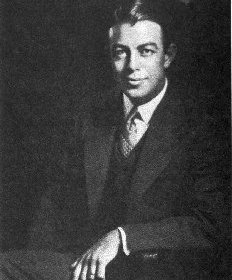Related Research Articles

Benjamin Lee Whorf was a US linguist and fire prevention engineer. Whorf is widely known as an advocate for the idea that differences between the structures of different languages shape how their speakers perceive and conceptualize the world. This principle has frequently been called the “Sapir–Whorf hypothesis”, after him and his mentor Edward Sapir, but Whorf called it the principle of linguistic relativity, because he saw the idea as having implications similar to Einstein’s principle of physical relativity. The idea, however, follows from post-Hegelian 19th-century philosophy, especially from Wilhelm von Humboldt; and from Wilhelm Wundt's Völkerpsychologie.

A language is a structured system of communication used by humans, based on speech and gesture, sign, or often writing. The structure of language is its grammar and the free components are its vocabulary. Many languages, including the most widely-spoken ones, have writing systems that enable sounds or signs to be recorded for later reactivation. Human language is unique among known systems of animal communication in that it is not dependent on a single mode of transmission, it is highly variable between cultures and across time, and affords a much wider range of expression than other systems. It has the properties of productivity and displacement, and relies on social convention and learning.

Body relative directions are geometrical orientations relative to a body such as a human person's. The most common ones are: left and right; forward(s) and backward(s); up and down. They form three pairs of orthogonal axes.
The hypothesis of linguistic relativity, also known as the Sapir–Whorf hypothesis, the Whorf hypothesis, or Whorfianism, is a principle suggesting that the structure of a language affects its speakers' worldview or cognition, and thus people's perceptions are relative to their spoken language.
In linguistics and related fields, pragmatics is the study of how context contributes to meaning. Pragmatics encompasses phenomena including implicature, speech acts, relevance and conversation. Theories of pragmatics go hand-in-hand with theories of semantics, which studies aspects of meaning which are grammatically or lexically encoded. The ability to understand another speaker's intended meaning is called pragmatic competence. Pragmatics emerged as its own subfield in the 1950s after the pioneering work of J.L. Austin and Paul Grice.

In navigation, bearing is the horizontal angle between the direction of an object and another object, or between it and that of true north.
The study of how language influences thought has a long history in a variety of fields. There are two bodies of thought forming around this debate. One body of thought stems from linguistics and is known as the Sapir–Whorf hypothesis. There is a strong and a weak version of the hypothesis which argue for more or less influence of language on thought. The strong version, linguistic determinism, argues that without language there is and can be no thought while the weak version, linguistic relativity, supports the idea that there are some influences from language on thought. And on the opposing side, there are 'language of thought' theories (LOTH) which believe that public language is inessential to private thought. LOTH theories address the debate of whether thought is possible without language which is related to the question of whether language evolved for thought. These ideas are difficult to study because it proves challenging to parse the effects of culture versus thought versus language in all academic fields.

Absolute space and time is a concept in physics and philosophy about the properties of the universe. In physics, absolute space and time may be a preferred frame.
A linguistic universal is a pattern that occurs systematically across natural languages, potentially true for all of them. For example, All languages have nouns and verbs, or If a language is spoken, it has consonants and vowels. Research in this area of linguistics is closely tied to the study of linguistic typology, and intends to reveal generalizations across languages, likely tied to cognition, perception, or other abilities of the mind. The field originates from discussions influenced by Noam Chomsky's proposal of a Universal Grammar, but was largely pioneered by the linguist Joseph Greenberg, who derived a set of forty-five basic universals, mostly dealing with syntax, from a study of some thirty languages.
Linguistic determinism is the concept that language and its structures limit and determine human knowledge or thought, as well as thought processes such as categorization, memory, and perception. The term implies that people’s native languages will affect their thought process and therefore people will have different thought processes based on their mother tongues.

The Guugu Yimithirr, also spelt Gugu Yimithirr and also known as Kokoimudji, are an Aboriginal Australian people of Far North Queensland, many of whom today live at Hopevale, which is the administrative centre of Hopevale Shire. At the 2011 census, Hopevale had a population of 1,005 people. It is about 46 kilometres (29 mi) from Cooktown by road. It is also the name of their language. They were both a coastal and inland people, the former clans referring to themselves as a "saltwater people".
Guugu Yimithirr, also rendered Guugu Yimidhirr, Guguyimidjir, and many other spellings, is an Australian Aboriginal language, the traditional language of the Guugu Yimithirr people of Far North Queensland. It belongs to the Pama-Nyungan language family. Most of the speakers today live at the community of Hope Vale, about 46 kilometres (29 mi) from Cooktown. However, as of June 2020 only about half of the Guugu Yimithirr nation speak the language. As such, efforts are being made to teach it to children. Guugu Yimithirr is the source language of the word "kangaroo".
Kata Kolok, also known as Benkala Sign Language and Balinese Sign Language, is a village sign language which is indigenous to two neighbouring villages in northern Bali, Indonesia. The main village, Bengkala, has had high incidences of deafness for over seven generations. Notwithstanding the biological time depth of the recessive mutation that causes deafness, the first substantial cohort of deaf signers did not occur until five generations ago, and this event marks the emergence of Kata Kolok. The sign language has been acquired by at least five generations of deaf, native signers and features in all aspects of village life, including political, professional, educational, and religious settings.
Malak-Malak, also known as Ngolak-Wonga (Nguluwongga), is an Australian Aboriginal language spoken by the Mulluk-Mulluk people. Malakmalak is nearly extinct, with children growing up speaking Kriol or English instead. The language is spoken in the Daly River area around Woolianna and Nauiyu. The Kuwema or Tyaraity (Tyeraty) variety is distinct.
In semiotics, linguistics, sociology and anthropology, context refers to those objects or entities which surround a focal event, in these disciplines typically a communicative event, of some kind. Context is "a frame that surrounds the event and provides resources for its appropriate interpretation". It is thus a relative concept, only definable with respect to some focal event within a frame, not independently of that frame.
Kuuk Thaayorre (Thayore) is a Paman language spoken in the settlement Pormpuraaw on the western part of the Cape York Peninsula, Queensland in Australia by the Thaayorre people. As of 2006, 250 of the 350 ethnic Thaayorre speak the language. It is in a robust position compared to many indigenous Australian languages, as it is still being acquired by children and used in daily interaction.
Spatial cognition is concerned with the acquisition, organization, utilization, and revision of knowledge about spatial environments. These capabilities enable individuals to manage basic and high-level cognitive tasks in everyday life. Numerous disciplines work together to understand spatial cognition in different species, especially in humans. Thereby, spatial cognition studies also have helped to link cognitive psychology and neuroscience. Scientists in both fields work together to figure out what role spatial cognition plays in the brain as well as to determine the surrounding neurobiological infrastructure.
John A. Lucy is an American linguist and psychologist. His work primarily concerns the relations between language and cognition, especially the hypothesis of linguistic relativity. He is the William Benton Professor in the Department of Comparative Human Development and the Department of Psychology at the University of Chicago. Lucy has worked extensively with the Yucatec Maya language, specializing in the system of noun classification.
The question whether the use of language influences spatial cognition is closely related to theories of linguistic relativity—also known as the Sapir-Whorf hypothesis—which states that the structure of a language affects cognitive processes of the speaker. Debates about this topic are mainly focused on the extent to which language influences spatial cognition or if it does at all. Research also concerns differences between perspectives on spatial relations across cultures, what these imply, and the exploration of potentially partaking cognitive mechanisms.
Reinhard Moratz is a German science educator, academic and researcher. He is Ausserplanmässiger Professor at the University of Münster’s Institute for Geoinformatics. He has worked on spatial cognition and reasoning, qualitative theories of low-dimensional entities like straight line segments and oriented points, artificial intelligence and specifically the OPRA calculus. His research is based on computational models that account for the varying reference frames used in giving verbal instructions about navigation.
References
- Levinson, S.C. (2003). Space in language and cognition. Cambridge: Cambridge UP.
- Majid, A; Bowerman, M; Kita, S; Haun, D. B.; Levinson, S. C. (2004). "Can language restructure cognition? The case for space" (PDF). Trends in Cognitive Sciences. 8 (3): 108–114. doi:10.1016/j.tics.2004.01.003. hdl: 2066/57358 . PMID 15301750.